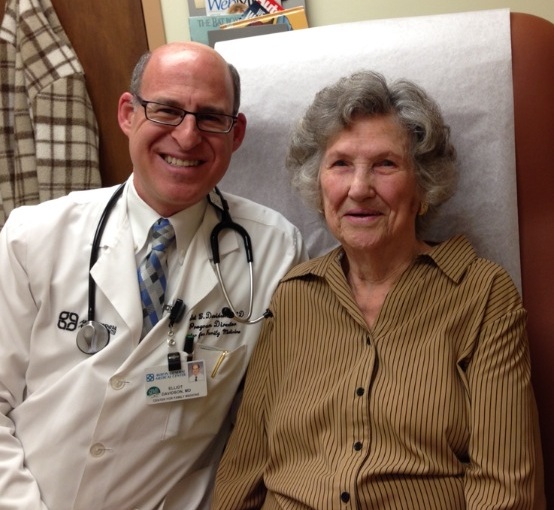One of the most valuable lessons I learned from a patient, unfortunately, happened after she died. Lots of doctors could not figure her out and she had the audacity to keep getting worse, in spite of our efforts to save her.
All the clues were there to make a correct diagnosis and she had a fixable problem. Nonetheless, we were not creative enough to help her.
The Case
Mrs. Piecemeal was a previously healthy pleasant 80 year old white woman who presented to my partner complaining of several weeks of fatigue, generalized achiness and low grade fever. Her Past Medical History was only significant for remote pericarditis and diverticulosis. Her Family Medical History was not helpful. Her only medication was Tylenol for an occasional headache.
On Physical Exam she looks tired, T 99F BP 110/60 slightly pale, with mild tenderness to her temporal scalp, otherwise negative.
Lab tests showed WBC 11,000(slight elevation), Hg 10.1 (moderate anemia), ESR 98 (Inflammation is high).
We then made a series of mistakes. A presumptive diagnosis of temporal arteritis was made and she was placed on Prednisone 60 mg daily. She felt worse and the steroids were stopped but she developed brisk rectal bleeding. Her colonoscopy showed blood throughout the colon but no bleeding sites. Upper scope was negative as were 2 bleeding scans. She required multiple transfusions and the surgeons decided to remove her colon. The bleeding continued, however and she developed high fevers and blood cultures grew out a strange strep species normally found in the mouth from every bottle.
We consulted ID, consulted CV Surgery, did an 2d Echo but no one had any good suggestions. The CV Surgeon told me there was nothing he could do. We started antibiotics but she continued to bleed.
We had one last chance to save her life. If you were her doctor, what would you do?
Diagnoses are elusive things sometimes. The fact is they are very important.Residents ask me all the time, “What should we do?”, and my answer is often,“First, let’s make a correct diagnosis”. One of my teachers, Gerald Bowling, MD, once made the observation when we were dancing around a difficulty diagnosis.“It’s in the lung, it’s in the lung, it’s in THE LUNG”! he implored us to not overlook the obvious or mis-connect the dots. So many things can color your thinking or send you down the wrong path.Remember Rule #2 is Don’t only Listen to the Patient. Well consultants might be very smart, they might know much more about an area than you, but consultants are not always right. Their advice is another VERY IMPORTANT data point, but as the Family Doctor, YOU need to put everything together sometimes to make the diagnosis.
In this case the CV Surgeon missed a chance to be the hero and told us nothing could be done. In fact, he was the only one who could have saved her, and I was not smart enough to figure the case out so I could convince him.
So…..What are the relevant fact of the case?
- Brisk GI bleeding
- Mouth organisms found in the blood
- History of Pericarditis
- Negative Upper Endoscopy
- Still bleeding after colectomy
STOP and Think for a minute
- She eventually died of an air embolism to the brain
This patient as it turned out had developed a small, positional cardio-gastric fistula (from her heart to her stomach). Infection from the mouth (and eventually the air that killed her) spread from the stomach into the heart and blood stream and blood streamed out from the heart into the stomach. When she lay on her left side, however, for the upper endoscopy, the fistula would close so no blood would be seen.
So many lessons in this one case!
First, don’t treat with steroids in Temporal Arteritis without confirming the diagnosis (preferable with a biopsy). Second, and sadly, the consultant is not always right. It would be easier for the primary care doctor if they were.
Thirdly, one must often be a detective to make a correct diagnosis. Fourthly, treatment is mostly folly without a correct diagnosis, at least when the condition is life threatening.
There are probably more lessons here, do you seen them? I have a hard time seeing them, perhaps, because I keep seeing Mrs. Piecemeal’s sweet face, and it reminds me that I failed her in a way, but if you learn from my mistakes, her death will not have been in vain.





